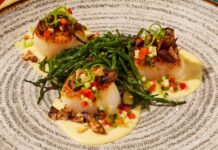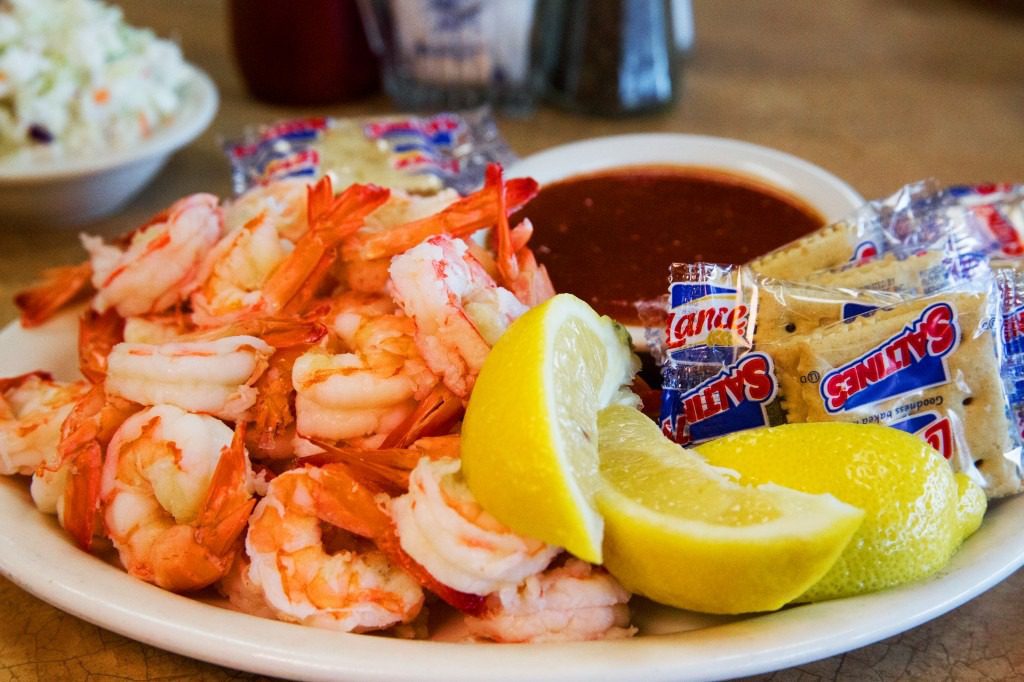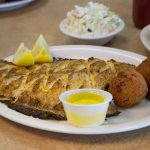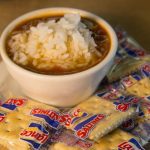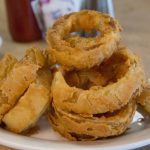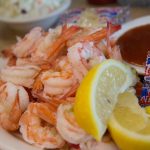It’s an East Coast dream, that bare-bones, serious-eating place hard by the wharf where you sit at long, communal tables and mingle with the fishermen who brought the catch in. Melville features such a place in Chapter 15 of Moby Dick along with a recipe for chowder, and a man named Joseph Mitchell discovered one (the Fulton Fish Market) 70 years ago in New York City and became famous by writing about it in The New Yorker. But try to find one in a coastal town today, and the best you can hope for is a dismal tourist trap. You have to look where you’d never expect to find it.
Drive north on a winter’s night on Sheridan Avenue in Tulsa, toward Dawson, and you’re in the sort of bleak, unrelenting terrain that’s used to film stories of the Trans-Siberian Railway. You’re a thousand miles from the sea. Suddenly on the left there’s a glimmer of light from a strip mall, and a parking lot full of cars at a time you wouldn’t expect to see any cars at all. You’ve found it. Walk in, and there’s a long counter with a cash register and, below that, gleaming like jewels behind shining glass windows, flounder and halibut and lobster tails and all the treasures of the sea. You pay the cashier, point to the fish you fancy, and say “broiled” or “grilled” or “fried.” The chef comes out of the kitchen just behind, takes the fish you chose and cooks it.
“You pick ’em, we fix ’em” has been the restaurant’s motto for more years than people can remember. Back in those days, you grabbed your fish from the bin and handed it to the cook, along with your money. Times have changed, but not by much.
Now, a place like this demands a story, and there’s a good one. It begins back in 1932 with a man named O.T. Fallis. He owned a truck and made his living taking goods to the Ozarks. There’s a lot of good fishing outside of Fayetteville, Ark., out there right where the White River begins – trout and bass and catfish, too. Somewhere he got the idea of taking that fish back to Tulsa and selling it by the side of the road. It was a screaming success, and he made enough to open a market, which he established in an old, white, slouching brick building in downtown Tulsa, within sight of the big skyscrapers on Boston Avenue. And so, all through the ’30s, a lot of farmers who would have followed the Joads into exile instead fished their way through the Great Depression.
“In those days,” recalls long-time customer and chef Tim Richards, “if you wanted to eat fish, either you headed for White River, or you grabbed your fishing pole.”
In the 1960s, rent got too high downtown, so Fallis moved the restaurant to its present location. All the fish was local then, trucked in from Arkansas and Oklahoma, but Fallis soon discovered that the airport was right around the corner. Walk in today and ask what’s on hand, and the manager will tell you: “Scallops fresh from Boston, shrimp fresh from Alabama, salmon fresh from Canada, catfish fresh from Louisiana, tuna fresh from Hawaii, trout fresh from Idaho mountain streams.” There they are, in the display case.
“Don’t worry,” says an old man with a long, white beard (he’s waiting for his catfish to fry), “they won’t bite you.”
Behind the register is a woman with gray hair in a bun. She stands ramrod-straight and greets the world with a big smile.
“That’s Hazel,” says the manager, an alert, intent young man named Chad Brinson. “She’s been here 32 years.”
“Only 31,” she corrects.
Some of the customers have spent as much time here as Hazel.
“Look, there’s Linda!” Brinson points to a group of women. “She comes here three times a week, for the past… how long?”
“Eighteen years!” Linda proudly replies.
It’s a loud, lively, friendly crowd that’s now pouring in toward the cash register.
“We get all kinds,” says Brinson, “from downtown lawyers and CEOs to truck drivers.”
Brinson should know. He first worked at White River when he was 9 years old. His uncle, Garry Cozby, owned the place and let him bus tables. Everyone misses Cozby, who died five years ago. The place is now owned by Tom Clark, Cozby’s longtime friend and fellow guitar player.
“Garry played guitar, banjo and a whole lot of golf,” recalls Brinson.
But most of his time was devoted to running the restaurant, a strange vocation for someone who hated the taste of fish. Perhaps that’s why the side dishes – made from recipes Cozby developed more than 30 years – are so good: Gumbo made from a roux stirred for four hours (“The guy who stirs it has arms like tree trunks,” says Brinson); rich, earthy pinto beans; light-yet-crunchy onion rings, homemade every morning.
“Oh, everything here is homemade, honey,” a waitress chimes in.
But it’s the fish that lands the write-ups in national magazines (Gourmet, Bon Appetit) and draws in customers from coast to coast: The broiled whole flounder (delicate, ethereal, yet packed with flavor), the lobster tails (sinfully rich, glistening with melted butter), the scallops (fried in cracker meal) that yield wafts of steam still redolent of the far-off ocean.
















